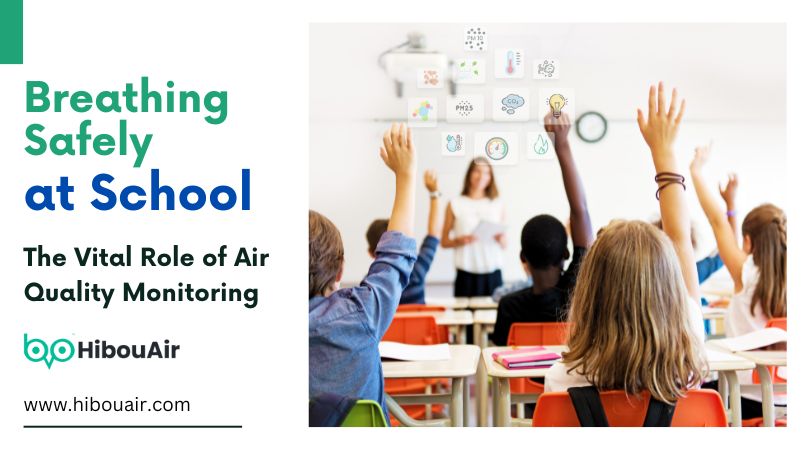Transforming Indoor Air Quality with HibouAir: Insights from Harvard Expert Joseph Allen
As we step into a new school year, concerns about indoor air quality in classrooms and other shared spaces have never been more critical. The ongoing battle against COVID-19 has highlighted the urgent need to reevaluate our indoor environments. To shed light on the importance of healthy buildings and the role of innovative air quality monitoring devices, we turn to Joseph Allen, the director of the Healthy Buildings program at the Harvard T.H. Chan School of Public Health.
The Sick Building Era:
Joseph Allen, the director of the Healthy Buildings program at the Harvard T.H. Chan School of Public Health mentions the concept of “sick buildings.” He emphasizes that, for too long, our buildings have been designed and operated without taking into account the latest health science. Poor ventilation and insufficient airflow have created indoor environments that do not support human well-being. When COVID-19 emerged, the consequences of these outdated building practices became evident, as the virus thrived in indoor spaces with inadequate air circulation.
Transitioning to Healthy Buildings:
To address this issue, Joseph Allen advocates transitioning from the “sick building era” to the “healthy building era.” He outlines four straightforward strategies that every building should pursue to improve indoor air quality and overall health:
1. **Building Tune-Up:** Regular maintenance to ensure optimal performance.
2. **Increased Outdoor Air Ventilation:** Bringing in more fresh outdoor air.
3. **Enhanced Filtration:** Upgrading to higher-efficiency filters (e.g., MERV 13).
4. **Portable Air Cleaners:** Utilizing plug-and-play devices with HEPA filters.
Moreover, he highlights the importance of monitoring indoor air quality using sensors, which can measure various parameters, including carbon dioxide and airborne particles. These sensors enable building owners and occupants to proactively address air quality issues.
HibouAir: Revolutionizing Indoor Air Quality Monitoring:
In this context, devices like HibouAir have emerged as invaluable tools for monitoring and improving indoor air quality. HibouAir is an air quality monitoring device that provides real-time data on indoor environments without the need for Wi-Fi, gateways, or cloud connectivity. Its sensors cover a wide range of parameters, including pressure, temperature, humidity, VOCs, CO2, and various particulate matter sizes (PM1.0, PM2.5, PM10).
HibouAir’s key features include:
– Real-time data accessible via mobile and desktop applications.
– Plug-and-play simplicity for easy installation.
– Storage of up to seven days’ worth of air quality data for in-depth analysis.
– Empowering users to take proactive steps to create healthier indoor environments.
In an era where indoor air quality is paramount, Joseph Allen’s insights from the Harvard T.H. Chan School of Public Health reinforce the importance of transitioning to healthy buildings. Devices like HibouAir offer practical solutions by providing real-time air quality data, allowing individuals and organizations to take informed actions to improve the air they breathe indoors. As we continue to battle health challenges, investing in technologies like HibouAir is a crucial step toward a healthier, safer future for all.
Reference : https://www.cbsnews.com/video/school-air-quality-impact-covid-spread/

